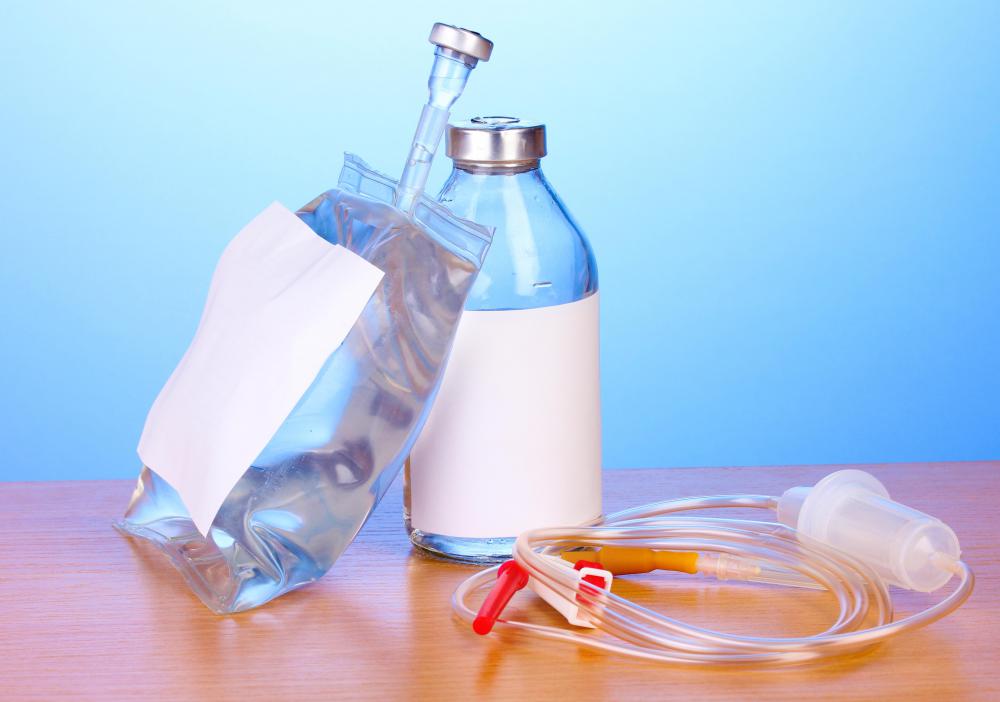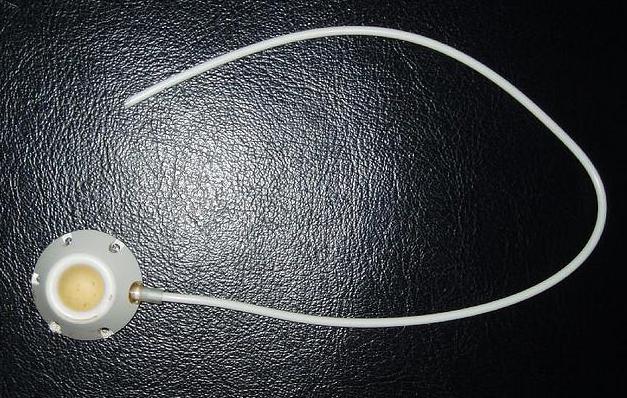At WiseGEEK, we're committed to delivering accurate, trustworthy information. Our expert-authored content is rigorously fact-checked and sourced from credible authorities. Discover how we uphold the highest standards in providing you with reliable knowledge.
What is a Central Venous Line?
A central venous line, also called a peripherally inserted central catheter (PICC) line or central venous catheter, is a small flexible tube that runs from a large vein near the heart, through the arm or chest, to outside the body. The goal of a central venous line is to provide immediate intravenous access to the heart for medical personnel. These small tubes are primarily used to supply the body with fluids and nutrients, but can also be used to deliver antibiotics in a hospital setting. They are commonly found in premature newborns, cancer patients, and patients that require constant supervision due to unpredictable diseases.
The most common setting for a central venous line is in a hospital, but it can also be used in other circumstances. A central line in a hospital can also go from the large vein near the heart, through the neck, to outside the body. Neck PICC lines are not commonly used to deliver long-term antibiotics, such as those used in a hospice setting, because of the potential discomfort they can cause the patient. Long-term care patients often use a central line that travels through the arm. This type of central line allows a patient to maintain a broader range of motion.

By using a catheter that connects as close as possible to the heart, doctors can avoid many of the complications that come for forcing antibiotics through the entire blood system. Central venous lines can also be kept in place for much longer periods of time than traditional central catheters; as a result, the lines are frequently used for patients who require constant care. The lines are also suitable for patients that may need immediate medication in an emergency, such as certain types of heart patients.

The three main types of central venous lines are PICC lines, tunneled catheters, and implanted ports. While the term PICC line is often used as a general term for all central lines, it actually denotes a specific kind of line that is inserted through the arm. A tunneled catheter shows a small section of the end of the line, while an implanted port lies entirely under the skin.

Occasionally, the use of a central venous line can cause complications. Potential complications range from a mild irritation at the insertion site to a potentially life threatening collapsed lung. Most complications are generally mild and not severe enough to discontinue the use of the catheter. Maintenance of the central venous line, along with proper insertion technique, usually will minimize or prevent most complications.
AS FEATURED ON:
AS FEATURED ON:














Discuss this Article
Post your comments